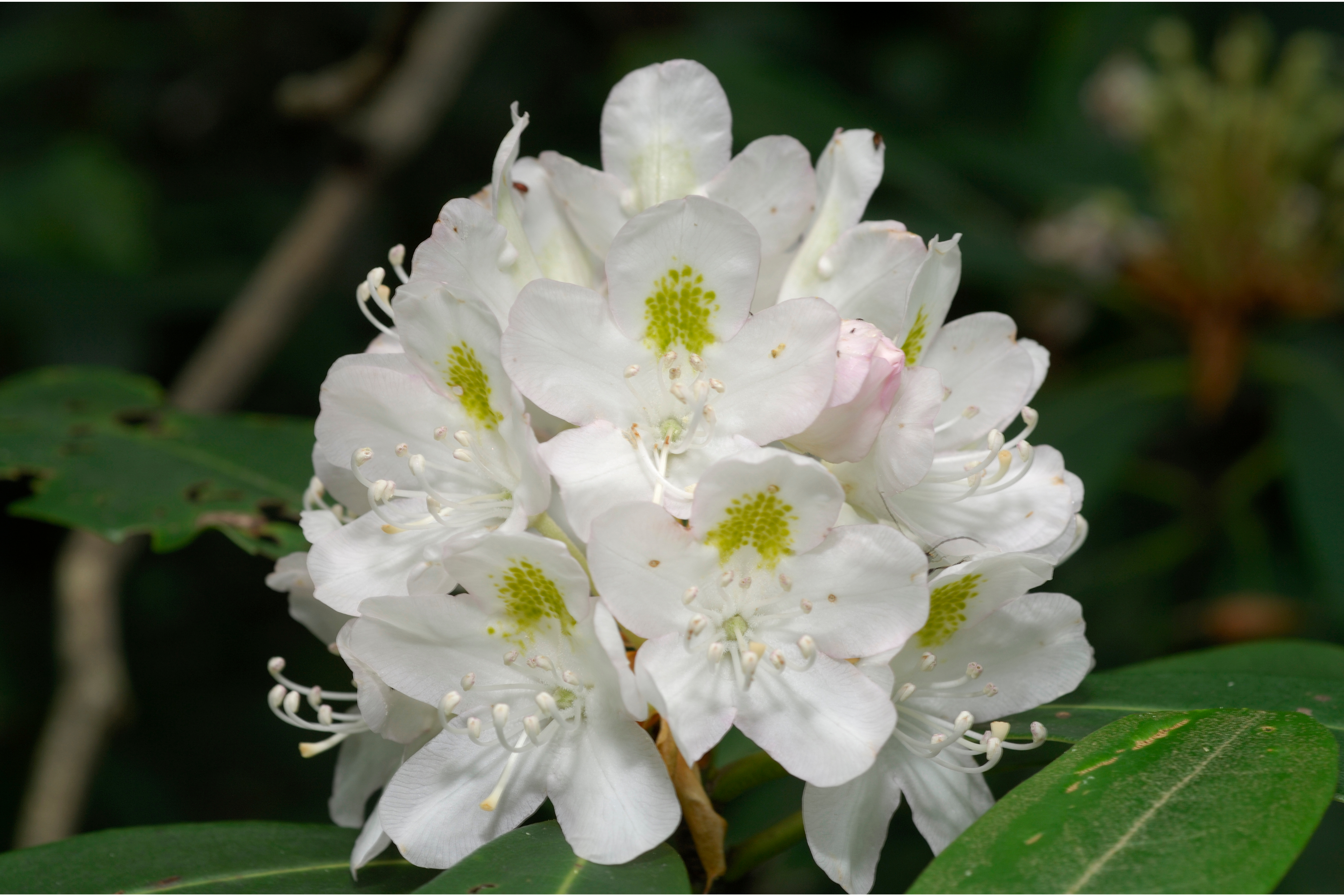Great laurel
(Rhododendron maximum)

Description
“Pet poisonous” – Toxic parts: entire plant Rhododendron maximum, commonly known as the Great Laurel or Rosebay Rhododendron, is a broadleaf evergreen shrub that belongs to the Ericaceae family. It is native to the eastern part of North America and can be found growing in the Appalachian Mountains from Georgia to Maine. The plant has a beautiful and distinctive bloom and is commonly used in landscaping and as a garden plant. Physical Description Rhododendron maximum is a large shrub that can grow up to 30 feet tall, although it is more commonly found growing to a height of 15 feet. The plant has dark green, leathery leaves that are elliptical in shape and grow to be 4-8 inches long. The leaves are arranged in whorls of 3-4 and are evergreen, meaning they do not fall off in the winter. The plant blooms in mid-June to July, producing clusters of pink to white flowers that can be up to 6 inches wide. The flowers have five petals that are fused at the base to form a funnel-like shape. The plant's fruit is a dry, woody capsule that contains many small seeds. Habitat and Range Rhododendron maximum is native to the eastern United States and can be found growing from Georgia to Maine. It is commonly found in the Appalachian Mountains, where it grows in moist, acidic soils, typically in shaded areas. The plant is well-adapted to its native environment and is able to tolerate a wide range of soil conditions, including sandy and rocky soils. It prefers moist soils and is often found growing near streams or other sources of water. Cultivation and Propagation Rhododendron maximum is a popular garden plant and is often used in landscaping. It is relatively easy to cultivate, and many cultivars have been developed with a variety of flower colors and growth habits. The plant prefers acidic soils with a pH of 4.5-5.5 and should be planted in a location that receives partial shade. It is important to keep the soil moist, especially during the plant's growing season. Propagation can be done by taking cuttings from the plant in early summer or by layering in the fall. Seeds can also be collected from the plant's fruit and sown in the fall. Uses Rhododendron maximum has a variety of uses. It is commonly used in landscaping as a garden plant or in naturalized plantings. The plant's large size and attractive blooms make it an excellent choice for creating a focal point in a garden or landscape. The plant is also used in traditional medicine to treat a variety of ailments, including coughs, colds, and gastrointestinal issues. The leaves and flowers contain compounds that have antitumor, antifungal, and antibacterial properties. Conservation Status Rhododendron maximum is not currently listed as a threatened or endangered species, although its natural habitat is under threat from development and habitat loss. The plant's native range is also threatened by the spread of invasive species such as Japanese knotweed and emerald ash borer. Conclusion Rhododendron maximum is a beautiful and versatile plant that is well-suited for a variety of landscaping and garden uses. It is easy to cultivate and has a wide range of medicinal properties. While it is not currently listed as a threatened or endangered species, its natural habitat is under threat from development and invasive species, highlighting the importance of preserving the plant's native range.
Taxonomic tree:







